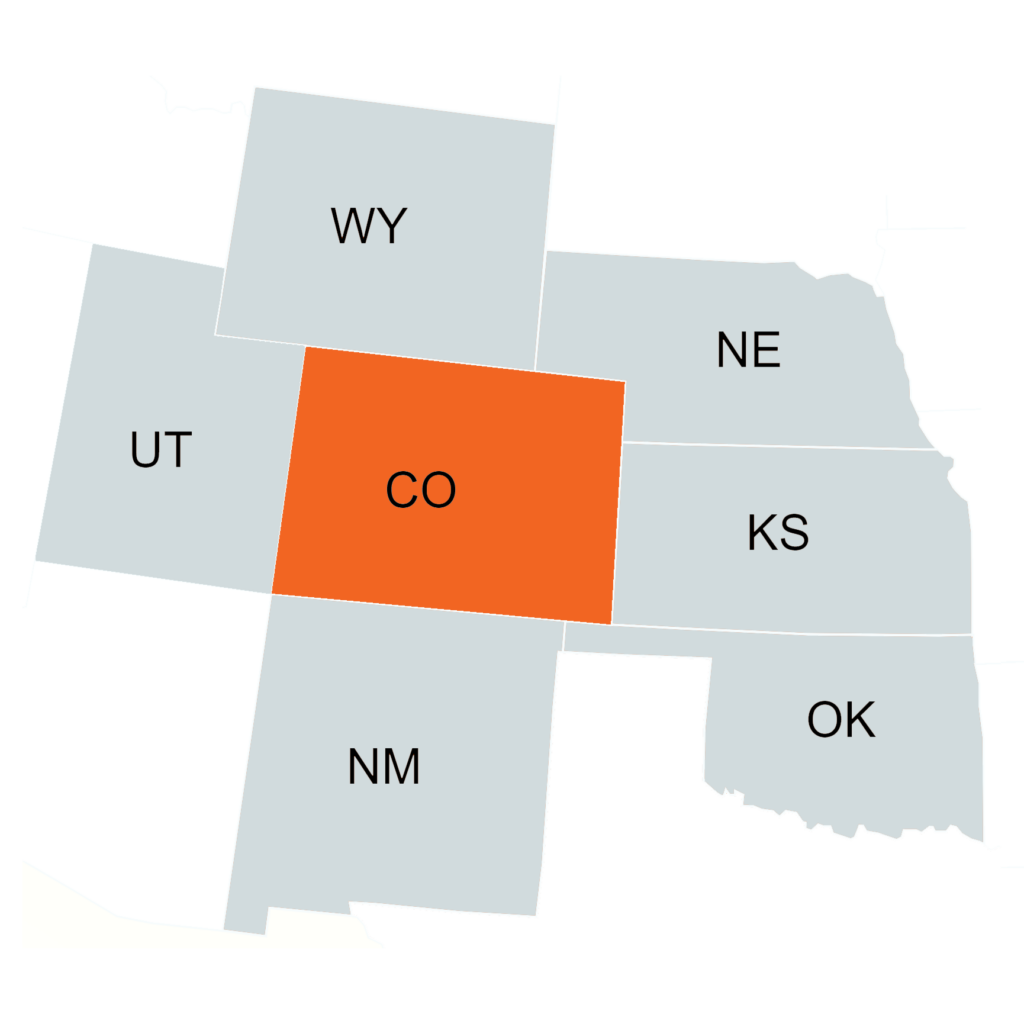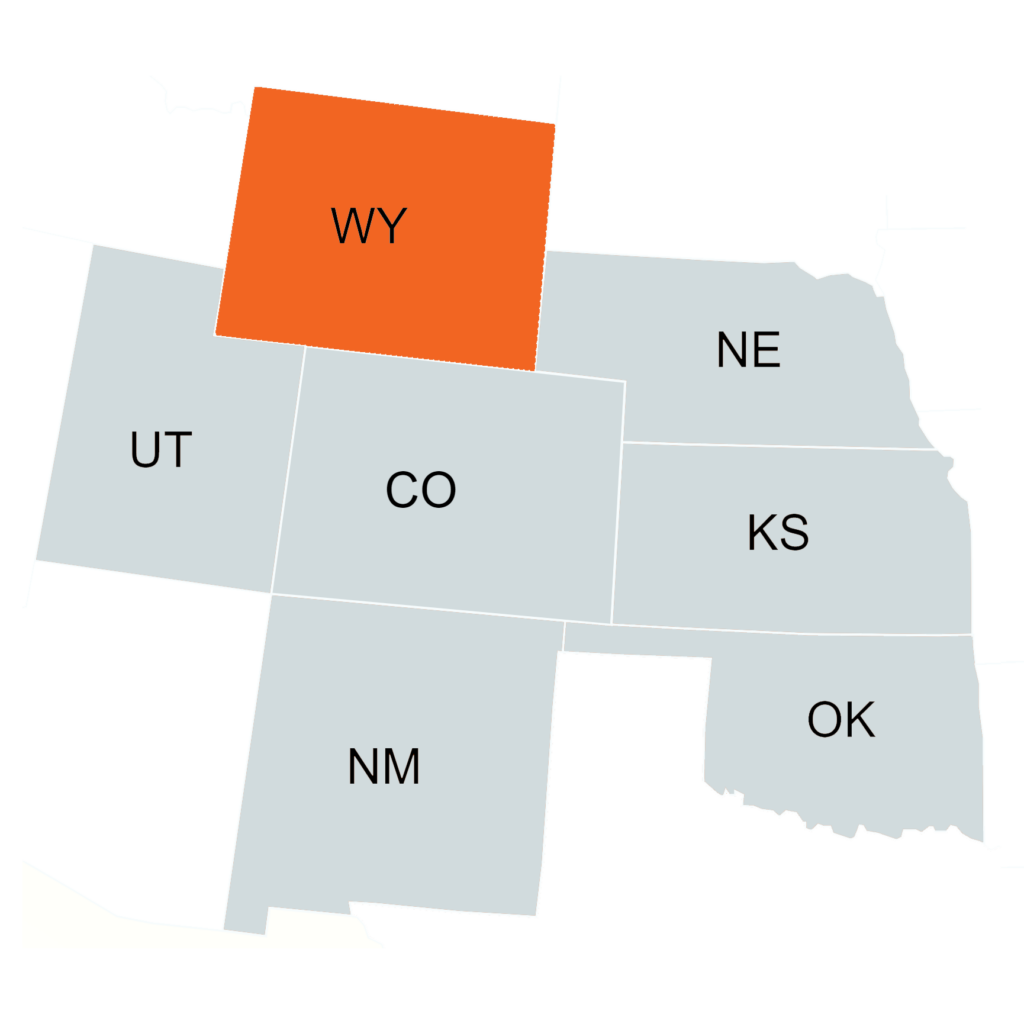
Update Friday, June 24, 2022 — 2:47 p.m.
On Friday, June 24, the Supreme Court ended constitutional protections for abortion that had been in place nearly 50 years — a 6-3 vote driven by its conservative majority to overturn the court's landmark abortion cases.
Thirteen states, including Texas, Utah and Wyoming, have trigger laws on the books, which make abortion illegal in the event that Roe is overturned. Those will now take effect.
Colorado's Reproductive Health Equity Act has codified the right to an abortion inthe state, allowing an individual to get one at any point during a pregnancy.
Our original story continues below.
As Coloradans await the final decision from the U.S. Supreme Court on the fate of Roe v. Wade, abortion rights advocates are preparing for what they consider an inevitable influx of patients from out of state.
According to data from the state health department, that uptick of abortion patients from outside of Colorado is already happening.
From 2017 to 2019, 11% of abortions in Colorado were performed on patients from out of state. In 2020, it went to 13% and was nearly 14% last year, according to the state health department. That accounts for 1,560 procedures out of the state’s total of 11,580 abortions in 2021.
Ultimately, how Colorado abortion providers will be affected by the court’s decision is a matter of numbers, geography and a patchwork of laws.
Take, for example, Texas, which is just a panhandle away from Colorado. In 2019, there were 57,275 reported abortions in that state, according to the U.S. Centers for Disease Control and Prevention. That’s a rate of 9.5 abortions per 1,000 women ages 15-44. In 2021, Texas passed a law banning abortion after six weeks.
Neta Meltzer with Planned Parenthood of the Rocky Mountains said about 45 percent of Texans seeking abortion after that law was enacted went to Oklahoma to get them. This week, the governor of Oklahoma — where, in 2019, there were 4,995 abortions or 6.4 per 1,000 women ages 15-44 — signed a similar early pregnancy abortion ban.
“That's a staggering volume of patients to absorb, and now (Oklahoma) will no longer be an option for those patients,” Meltzer said. “We are already seeing Texas patients because Colorado is another one of the destinations that they go to to receive that care.”
Data from the Colorado Department of Public Health and Environment back that up. In 2020, 240 patients from Texas received abortions in Colorado. In 2021, that number went up to 400. Texas is only second to Wyoming, where a law banning abortion would take effect if Roe v. Wade is overturned. Last year, 414 Wyomingites crossed the state line for care, up from 368 in 2020.
Meltzer said that if the Supreme Court decision comes down as it was drafted in the leaked ruling, it will have a ripple effect across the country. And Colorado will be an island of access, surrounded by states, save for New Mexico, that have partial or total bans on abortion.
In the meantime, abortion rights advocates are gearing up.
“We have been preparing for some time. We have been working with the clinics that provide care. We are working with abortion funding, and we are going to continue to try to coordinate to make sure we don't turn anyone away,” said Karen Middleton, president of Cobalt, formerly NARAL CO.
Meltzer said there is really no way to predict what the influx of patients will look like, but if Roe v. Wade is overturned, it puts focus — and pressure — on Colorado.
“We are anticipating at least a 20 percent uptake in patients over the next one to three years. And certainly some of that will happen immediately,” Meltzer said.
Let’s take a look what abortion care looks like across the region.
Colorado

The laws: Colorado’s Democratic lawmakers enacted a law earlier this year aimed at protecting legal access to an abortion in the state. Gov. Jared Polis signed the Reproductive Health Equity Act into law on April 4. The law does three things:
- Enshrines the legal right to abortion and contraceptive medicines in state law
- Defines embryos, fertilized eggs and fetuses as lacking any standing under state law
- Forbids public entities in Colorado from restricting access to contraceptives or an abortion
The numbers: The state health department keeps records of residents who get abortions. In 2021, there were 11,580. That was an uptick from the year before, when the total was 9,869. The CDC’s data has Colorado with a rate of 7.6 abortions for every 1,000 women ages 15-44.
According to the state, the women who got abortions in 2021 were largely white, between the ages of 20-29, unmarried and childless. About 60% lived along the Front Range. And the majority of abortions happened at or before the 10th week of pregnancy. The most common procedure, at 68%, was medication, and 99% of the procedures were done at a clinic or a doctor’s office.
Wyoming

The law: Wyoming is one of the 13 “trigger” states that have passed laws that will effectively ban abortions if the Supreme Court overturns Roe v. Wade. The law makes exceptions in cases of incest or sexual assault, to prevent death or severe injury to a pregnant person.
The numbers: In 2019, the most recent year of data from the CDC, there were 31 abortions in the state. That’s a rate of 0.3 abortions for every 1,000 women ages 15-44 — the lowest in the nation that year. However, of the out-of-state patients who come to Colorado, those from Wyoming top the list. Last year, 414 patients crossed the state line for care. It was 368 in 2020.
Utah

The law: Utah is another “trigger” state that would ban abortions except in the case of incest or sexual assault, to prevent death or serious injury to the pregnant woman, or if the fetus has severe or deadly birth defects.
The numbers: In 2019, there were 2,922 abortions reported in the state. That’s a rate of 4.2 abortions for every 1,000 women, ages 15-44. Forty-nine patients from Utah came to Colorado for abortion care in 2020, and 54 came in 2021.
Nebraska

The law: Abortion is legal in Nebraska with some exceptions when the patient is a minor and for telemedicine. State lawmakers there failed to pass a trigger ban this year. Some are trying to call for a special session for the Nebraska legislature to enact a trigger ban again.
The numbers: In 2019, there were 2,068 reported abortions in Nebraska. That’s a rate of 5.5 abortions per 1,000 women ages 15-44. There was an increase of patients from Nebraska who came to Colorado — 85 in 2020 and 104 in 2021.
Kansas

The law: The legal right to an abortion is enshrined in the Kansas Constitution, so the overturning of Roe v. Wade would not override the state’s legal access to abortion. But, the Republican majority in the state is asking voters in August to add an amendment on abortions that would allow lawmakers to ban the procedures if Roe v. Wade is overturned.
The numbers: The state reported 6,884 abortions in 2019, according to the CDC. That’s a rate of 12.3 abortions for every 1,000 women ages 15-44. Considering the current legal status in Kansas, just 34 patients received care in Colorado in 2020 and 33 in 2021.
Oklahoma

The law: The governor just signed a bill this week that makes abortions after six weeks of pregnancy illegal — a near copy of the Texas measure that passed in 2021. The bill allows for the exception of medical emergencies, but does not make exceptions for incest or sexual assault. Before that law was enacted, four clinics provided abortions in the state.
The numbers: According to the Oklahoma Department of Health, there were 3,737 abortions in 2020. And about 9% of those were Texans seeking care. Last year, 13 Oklahomans came to Colorado for abortion care. It was 16 in 2021.
New Mexico

The law: Abortion is legal and will remain legal if the decision to overturn Roe v. Wade comes down. There was an abortion ban on the state’s books that would have been activated if the Supreme Court’s draft opinion becomes reality. But last year the governor struck that law from the books. Many Texans have crossed state line to receive abortion care in New Mexico.
The numbers: In 2019, there were 3,942 abortions reported. That’s a rate of 9.9 abortions for every 1,000 women ages 15-44. Despite access in the state, Colorado still saw New Mexico patients seeking abortions. In 2020, 186 patients from there got abortions in Colorado, and in 2021, it was 189 patients.









